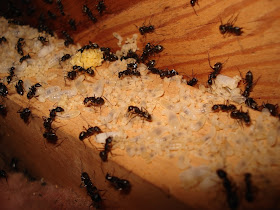Time
The concept of time is discussed mainly in Chapter 8: First Time. It talked about how the flies in the experiment had a sense of time. Konopka experimented with this in Benzer's laboratory and eventually discovered a gene that they called the "clock gene." It was the gene that controlled the flies' sense of time. The flies had a routine of being active at sunup and stop moving at sundown, even if the room they were in was dark. Without the gene, they did not follow this routine and would "wake and sleep at random intervals" (5).
Love
The concept of love is discusses mainly in Chapter 9: First Love. It begins with the quote by William Blake, from "The Question Answer'd": "What is it men in women do require? The lineaments of Gratified Desire. What is it women in men do require? The lineaments of Gratified Desire" (112). The book goes on to explain that according to Darwin, reproduction is an important part in adaptation of survival. It gives the chance for the more favorable genes to be expressed. In the experiment in the book, flies have certain steps in their mating process. They discovered that this chain of steps is controlled by a gene. In other words, every step in the mating process is inherited.
Memory
The concept of memory is discussed mainly in Chapter 10: First Memory. The book talks about how "evolution is learning" (132) and that "species store learning in chromosomes the way individuals store learning in their brains and societies store learning in books." There is information that the flies would learn at the present time and the information that their ancestors had when life began. The ability to learn and remember is also in their genes, for "the memory of discovery...has been passed down from generation to generation since near the beginning of life" (132).
Source: Time, Love, Memory: A Great Biologist and His Quest for the Origins of Behavior by Jonathan Weiner
The concept of time is discussed mainly in Chapter 8: First Time. It talked about how the flies in the experiment had a sense of time. Konopka experimented with this in Benzer's laboratory and eventually discovered a gene that they called the "clock gene." It was the gene that controlled the flies' sense of time. The flies had a routine of being active at sunup and stop moving at sundown, even if the room they were in was dark. Without the gene, they did not follow this routine and would "wake and sleep at random intervals" (5).
Love
The concept of love is discusses mainly in Chapter 9: First Love. It begins with the quote by William Blake, from "The Question Answer'd": "What is it men in women do require? The lineaments of Gratified Desire. What is it women in men do require? The lineaments of Gratified Desire" (112). The book goes on to explain that according to Darwin, reproduction is an important part in adaptation of survival. It gives the chance for the more favorable genes to be expressed. In the experiment in the book, flies have certain steps in their mating process. They discovered that this chain of steps is controlled by a gene. In other words, every step in the mating process is inherited.
Memory
The concept of memory is discussed mainly in Chapter 10: First Memory. The book talks about how "evolution is learning" (132) and that "species store learning in chromosomes the way individuals store learning in their brains and societies store learning in books." There is information that the flies would learn at the present time and the information that their ancestors had when life began. The ability to learn and remember is also in their genes, for "the memory of discovery...has been passed down from generation to generation since near the beginning of life" (132).
Source: Time, Love, Memory: A Great Biologist and His Quest for the Origins of Behavior by Jonathan Weiner





.jpg)




































